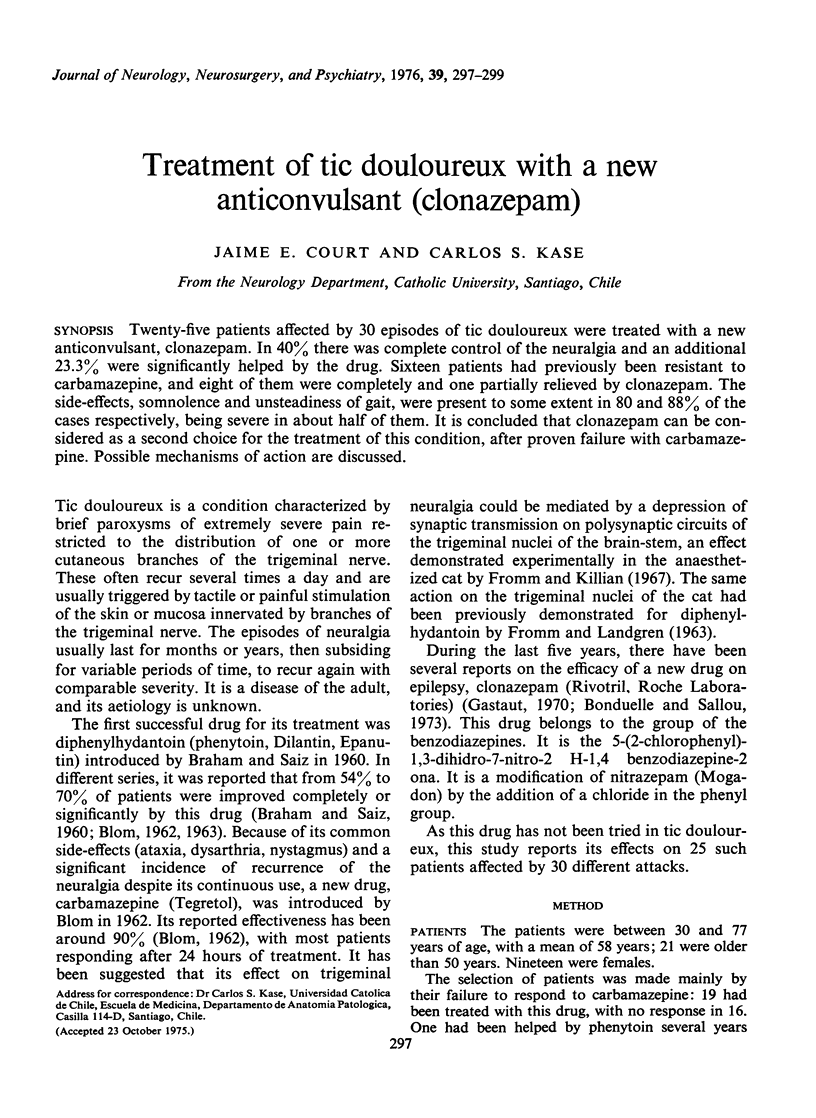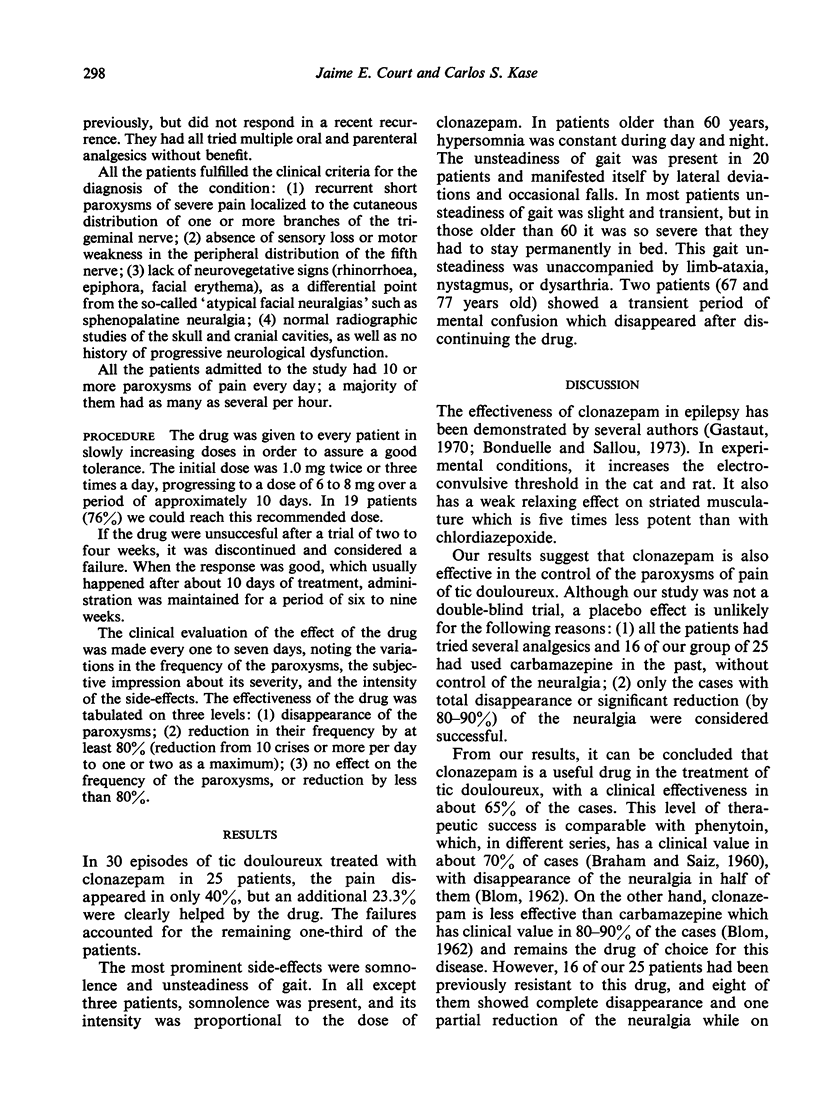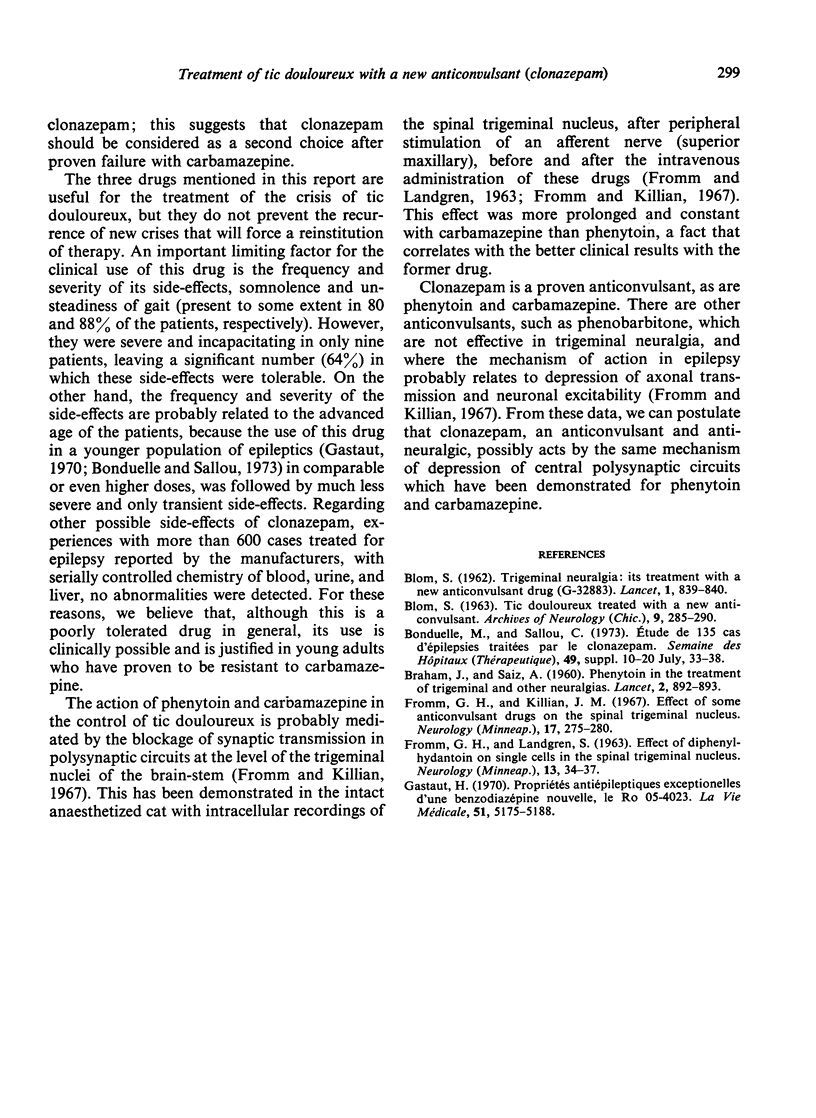Abstract
Twenty-five patients affected by 30 episodes of tic douloureux were treated with a new anticonvulsant, clonazepam. In 40% there was complete control of the neuralgia and an additional 23.3% were significantly helped by the drug. Sixteen patients had previously been resistant to carbamazepine, and eight of them were completely and one partially relieved by clonazepam. The side-effects, somnolence and unsteadiness of gait, were present to some extent in 80 and 88% of the cases respectively, being severe in about half of them. It is concluded that clonazepam can be considered as a second choice for the treatment of this condition, after proven failure with carbamazepine. Possible mechanisms of action are discussed.
Full text
PDF


Selected References
These references are in PubMed. This may not be the complete list of references from this article.
- BLOM S. TIC DOULOUREUX TREATED WITH NEW ANTICONVULSANT; EXPERIENCES WITH G 32883. Arch Neurol. 1963 Sep;9:285–290. doi: 10.1001/archneur.1963.00460090091009. [DOI] [PubMed] [Google Scholar]
- BLOM S. Trigeminal neuralgia: its treatment with a new anticonvulsant drug (G-32883). Lancet. 1962 Apr 21;1(7234):839–840. doi: 10.1016/s0140-6736(62)91847-0. [DOI] [PubMed] [Google Scholar]
- FROMM G. H., LANDGREN S. Effect of diphenylhydantoin on single cells in the spinal trigeminal nucleus. Neurology. 1963 Jan;13:34–37. doi: 10.1212/wnl.13.1.34. [DOI] [PubMed] [Google Scholar]
- Fromm G. H., Killian J. M. Effect of some anticonvulsant drugs on the spinal trigeminal nucleus. Neurology. 1967 Mar;17(3):275–280. doi: 10.1212/wnl.17.3.275. [DOI] [PubMed] [Google Scholar]


